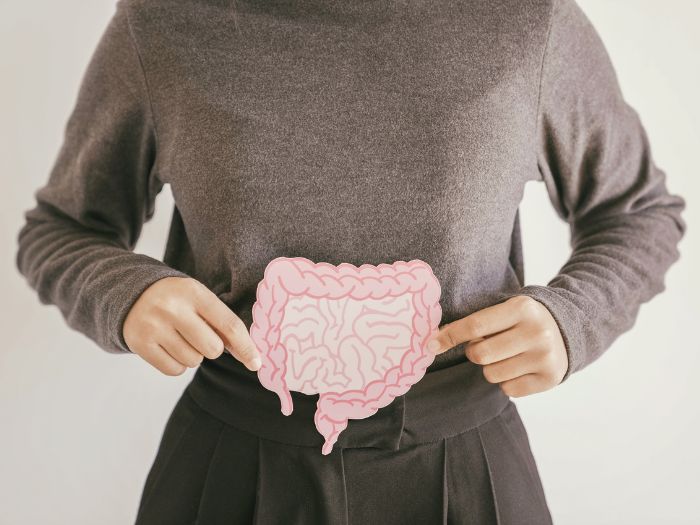Iron infusions have grown in popularity over the last few years, and for good reason: they deliver iron directly into the bloodstream, something that can be hugely beneficial.
But if you’re new to iron infusions, understanding much beyond the above can be a head-scratcher.
In this article the Well on Bay experts explain what exactly iron infusions are, who they are for and how they can transform your health.
What iron infusions are
Iron infusions are medical procedures that deliver iron directly into the bloodstream through an intravenous (IV) tube.
They are typically recommended when oral iron supplements are ineffective or cause nasty side effects.
Iron infusions are often prescribed to patients with iron-deficiency anaemia, which means low levels of red blood cells due to insufficient iron.
The procedure allows rapid and efficient replenishment of iron in the body, which helps with the production of healthy red blood cells and alleviates the symptoms associated with anaemia, more on that below.
Iron for our bodies in brief
In our bodies, iron is like a special ingredient that helps us stay healthy. It’s not the same as the iron you see in metal objects.
This “body iron” is super important for making red blood cells, which carry oxygen to all parts of your body.
The iron infusion process at Well on Bay
One
In one of our private consultation rooms, your doctor sets up a small tube called an IV, which stands for ‘intravenous’ meaning “in the vein”.
This is inserted into your cleaned arm or hand using a needle.
Generally, having an IV should not hurt too much, but this can differ from person to person.
In most cases, you’ll feel a pinch or small amount of pressure in the IV site, but not much pain. Many of our patients report no pain at all.
Two
The IV tube is connected to a bag containing liquid iron medicine which slowly drips from the bag into your bloodstream through the IV.
While this happens, you can usually relax in a comfy chair. The process takes some time, around 30 minutes to an hour or more.
You’re welcome to use your phone, read a magazine or chat to one family member or friend during the iron infusion. However, please keep noise to a respectable level.
Three
After it’s done, you might need to wait in our practice for 10 to 15 minutes to make sure you’re feeling okay before heading home.
Your doctor will advise on this.
Common questions during an iron infusion
Can I go to the toilet during an iron infusion?
Yes, we can stop, pause and continue as required, however, it’s strongly recommended to go to the toilet before commencing.
Can I drive home after the procedure?
Yes, you can.
Can I eat and drink during an iron infusion?
Yes, you can. Eating and drinking during the procedure is possible should you require. Water or a sweet drink like fruit juice is a good option during the procedure.
Having a light snack before commencing align with plenty of fluid is a good idea.
Can I bring in friends and family during the procedure?
In most cases, we only allow one other person with you during the procedure.
How to know if you need an iron infusion
Iron infusions are typically for people who have iron-deficiency anaemia and/or those who have trouble with iron supplements.
That doesn’t exactly make things very clear, so here it is in more detail.
Iron infusions for anaemia
Anaemia is when there isn’t enough haemoglobin in the body to carry oxygen to the organs and tissues.
Haemoglobin (Hb) is a protein found in the red blood cells that carries oxygen in your body and gives blood its red colour.
Hint: Your blood won’t change colour if you have anaemia.
To find out if you have low iron levels, you’ll need to speak to a specialist but there may be a few signs.
Signs you may have low iron levels:
- Fatigue, weakness and low energy: Persistent tiredness and low energy, even after proper rest and sleep
- Paler skin than usual
- Shortness of breath and/or difficulty breathing, especially during physical activity
- Dizziness or Lightheadedness: You might feel unsteady or faint, or like you’re going to faint, particularly when standing up
- Cold hands and feet: Poor circulation can lead to a feeling of coldness in your extremities
- Headaches more than usual
- Brittle nails
- Sore or inflamed tongue: Your tongue may become swollen or sore
Difficulty swallowing: In some cases, people with iron deficiency may experience difficulty swallowing (known as dysphagia)
If you experience any of these symptoms, or a combination of them, speak to a professional as they might indicate something serious.
However, remember that noticing one of these signs, especially if it’s temporary, may not mean you require an iron infusion.
Intolerance to supplements
Some people are prescribed iron infusions because they are unable to take oral iron supplements.
They might experience stomach problems like nausea, cramps or constipation when they try to swallow the iron supplement pills.
The iron in the pills may not get absorbed well in some people’s bodies too, in which case it doesn’t help their low iron levels.
In such cases, doctors might recommend an iron infusion.
Another reason that some women may turn to iron infusions is that they help regulate iron content which might be lost during menstruation.
This depends on other factors and needs to be discussed with a health professional.
The benefits of iron infusions and how they can transform your health
Getting an iron infusion is a relatively simple and painless procedure. We find that our patients report a range of benefits, including:
- Fast iron replenishment
- Energy boost: With sufficient iron, your body can produce more red blood cells, improving oxygen transport and reducing fatigue, giving you more energy
- Improved cognitive function
- Physical activity ability
- Increased vitality: Addressing iron deficiency can alleviate symptoms like weakness and lethargy, contributing to an overall sense of vitality.
- Better immune function: Iron plays a role in a healthy immune system
- Healthy hair and nails
- Mood improvement: Iron is essential for neurotransmitter function, and correcting deficiency may positively influence mood and alleviate symptoms like irritability or low mood
Generally speaking, iron infusions can significantly boost your energy levels and alleviate symptoms of fatigue caused by iron deficiency anaemia.
By replenishing iron stores in the body more rapidly than oral supplements, infusions can often improve symptoms such as weakness, shortness of breath, and cognitive fog.
For individuals with severe iron deficiency or those who cannot tolerate oral iron, infusions offer a direct and efficient method to restore iron levels, leading to a notable improvement in overall health and well being.
In summary
Iron infusions aren’t an over-the-counter quick option, they are medical procedures that need to be administered by professionals.
That’s after consultation and advice per individual circumstances.
After such consultations, iron infusions have the power to dramatically transform your health and alleviate a range of symptoms.
If you feel that you’re experiencing any of the symptoms listed above, or perhaps feel that an iron infusion could offer you benefits, get in touch with us.







